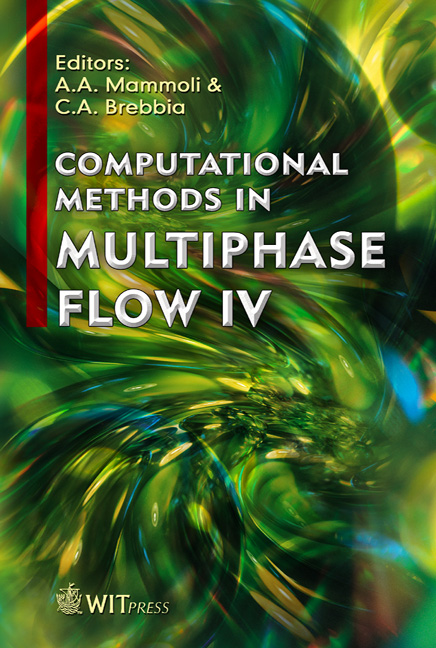Analysis Of Two- And Three-particle Motion In A Couette Cell
Price
Free (open access)
Transaction
Volume
56
Pages
10
Published
2007
Size
936 kb
Paper DOI
10.2495/MPF070301
Copyright
WIT Press
Author(s)
M. Popova, P. Vorobieff & M. Ingber
Abstract
We present an experimental investigation of the irreversibility of two and three spherical particle interactions in shear flow. The experiment is performed in a stratified two-dimensional fluid inside a Couette cell at a very low Reynolds number. The particles are placed into the cell in well-characterized initial positions. Their motion is driven by the inner wall of the cell that is repeatedly rotated by the same angle clockwise and then counterclockwise. Nominally the flow is completely reversible (if the particles do not come close to each other, they return to their initial positions). Three types of particles are used with different surface roughnesses. In two-particle interactions, the degree of irreversibility on the macroscopic scale is found to be correlated with the average microscopic roughness of the particles. Subsequently, we investigate three-particle interaction and find an appreciably different behaviour, suggesting that forces in a multiparticle system cannot be reduced to force-pairs between individual particles. 1 Introduction Addition of a suspended phase (gas bubbles, particles, or droplets) to a fluid flow appreciably complicates the challenge of predicting the flow, either theoretically or numerically. In many modern applications, especially in the emerging areas of micro- and nanoscale processing, the flow regime of most interest is viscous, nonlinear shear suspension flow. It may occur during composite and ceramic processing, production of semiconductors and magnetic storage media, and encapsulation of electronic components. Viscous shear flows with particle suspensions are also important in such earth, environmental, and planetary science problems as transport of sediments, contaminants, and slurries, and secondary oil recovery by hydraulic fracturing.
Keywords





